Denemek ALTIN - Özgür
Fire In The Fens
Archaeology
|January/February 2017
A short-lived settlement provides an unparalleled view of bronze age life in eastern england.

Some 3,000 years ago, throughout Britain, broad changes in settlement patterns, society, and technology were slowly bringing an end to what archaeologists call the British Bronze Age (2500–800 b.c.). In the coming centuries, the Iron Age would emerge. But in the wetlands of East Anglia, referred to as the Fenland, a transformation of another sort, both more conspicuous and tangible, was taking place. Climate change was gradually causing water levels to rise, and, as marshland increased, vital dry land became scarcer. The solution for one small settlement was to build its homes on pylons directly above the water. However, by some twist of fate, shortly after the new settlement was built, it was destroyed by fire—whether deliberate or accidental is not known. The conflagration caused the houses and their contents to collapse into the shallow river below. There, extraordinary circumstances led to their preservation and eventual discovery. Recent excavations of this Late Bronze Age village are providing archaeologists with as yet unmatched insights into the lifestyle and day-to-day lives of Britons three millennia ago. It is considered one of the most important discoveries in the history of British archaeology.
The site, called Must Farm, is named after and located in a modern-day clay quarry outside the town of Peterborough.Until now, much of what is known about Bronze Age Britain has stemmed from investigations of specialized sites such as burial mounds, megalithic monuments, or ritual deposits of bronze weapons. While these types of finds have value, they offer archaeologists little information about ordinary people and everyday life. Even when Bronze Age houses and settlements have been identified, they have yielded scant material evidence.
Bu hikaye Archaeology dergisinin January/February 2017 baskısından alınmıştır.
Binlerce özenle seçilmiş premium hikayeye ve 9.000'den fazla dergi ve gazeteye erişmek için Magzter GOLD'a abone olun.
Zaten abone misiniz? Oturum aç
Archaeology'den DAHA FAZLA HİKAYE
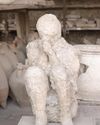
Archaeology
LEGEND OF THE CRYSTAL BRAIN
When most people envision the victims of the eruption of Mount Vesuvius in A.D. 79 that destroyed the cities of Pompeii and Herculaneum, they think of the casts of their bodies made by pouring plaster into voids left by their decaying corpses. Yet not all the physical remains of those who perished in the cataclysm decayed. In one case, a remarkable transformation occurred—a man’s brain turned to glass.
3 mins
July/August 2025
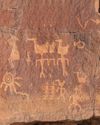
Archaeology
Birds of a Feather
Intriguing rock art in the Four Corners reveals how the Basketmaker people drew inspiration from ducks 1,500 years ago
8 mins
July/August 2025
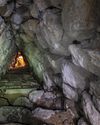
Archaeology
THE HOME OF THE WEATHER GOD
In northern Anatolia, archaeologists have discovered the source of Hittite royal power
13 mins
July/August 2025

Archaeology
SAINTS ALIVE
Since 2019, archaeologists have been excavating in Berlin's oldest square, known as the Molkenmarkt, or Whey Market.
1 min
July/August 2025

Archaeology
SOLDIERS OF ILL FORTUNE
The Schmalkaldic War, which began in 1546 and lasted less than a year, pitted the forces of the Holy Roman emperor Charles V (reigned 1519-1556) against the Schmalkaldic League, a Protestant alliance formed by German principalities and cities within the empire.
1 mins
July/August 2025
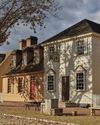
Archaeology
A NEW LOOK AT AN OLD CITY
Archaeologists are reconstructing the complicated 400-year history of Virginia's colonial capital
13 mins
July/August 2025
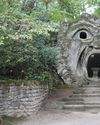
Archaeology
ITALY'S GARDEN OF MONSTERS
Why did a Renaissance duke fill his wooded park with gargantuan stone
10 mins
July/August 2025
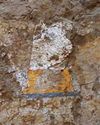
Archaeology
In Search of Lost Pharaohs
Anubis Mountain conceals the tombs of an obscure Egyptian dynasty
3 mins
July/August 2025
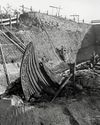
Archaeology
Setting Sail for Valhalla
Vikings staged elaborate spectacles to usher their rulers into the afterlife
15 mins
July/August 2025

Archaeology
BOUND FOR HEAVEN
During excavations of a Byzantine monastery in 2017 just north of Jerusalem's Old City, a team led by Israel Antiquities Authority archaeologists Zubair 'Adawi and Kfir Arbiv discovered an unusual burial in a crypt beneath the altar of the complex's church.
1 mins
July/August 2025
Translate
Change font size
